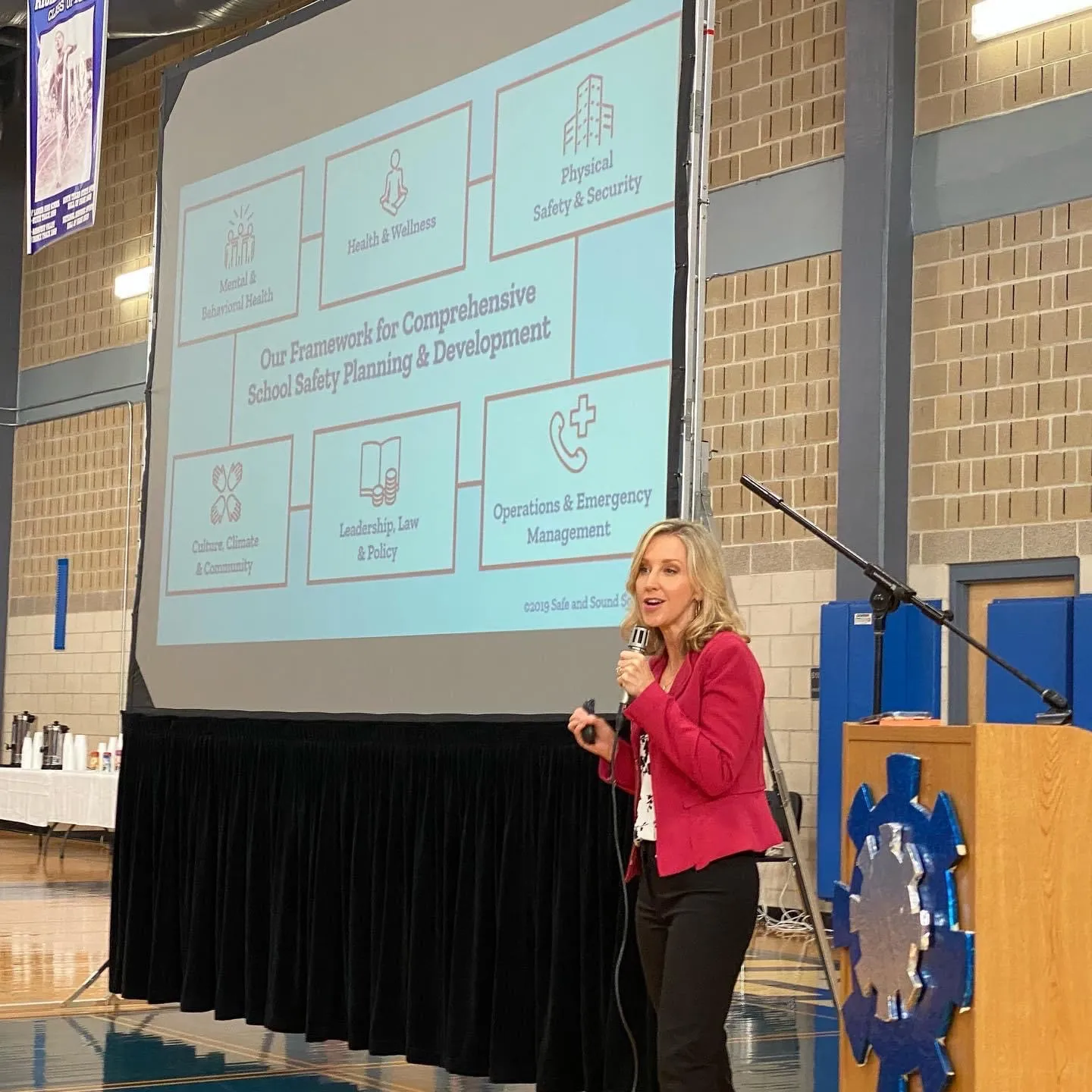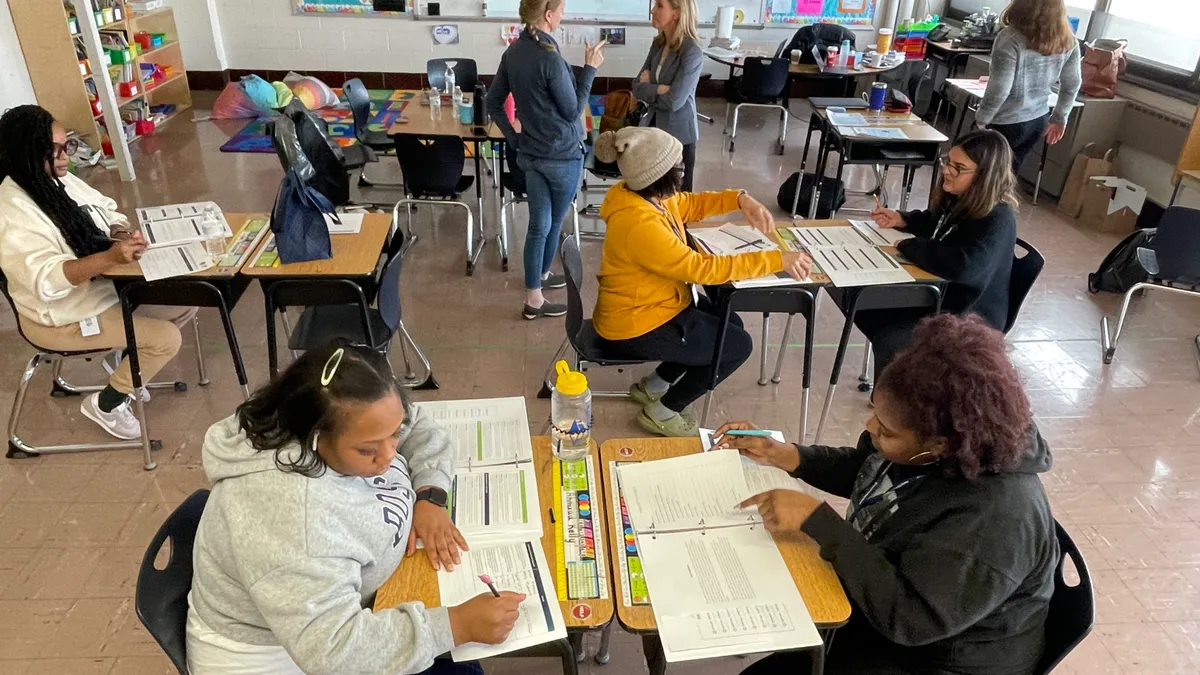As many schools refine their emergency plans and safety trainings in response to a national increase in school shootings, there's growing interest in crisis preparation regarding the needs of students and other people with disabilities or other unique circumstances.
One program, Especially Safe, is trying to provide answers. Its primary creator, Michele Gay, tragically understands how valuable inclusive emergency preparation can be.
Gay lost her daughter, Josephine Gay, a 7-year-old 1st grader, during the Sandy Hook Elementary School shooting in December 2012. Josephine loved school, and her parents and school staff took many steps to provide individualized services for Josephine, who had gross motor challenges, visual impairments and autism, said her mom, a former teacher.
But nothing prepared the community for the school shooting that ended the lives of 20 students and six staff members, Gay said. The 26 lives lost have made Sandy Hook the deadliest K-12 school shooting.
Despite the heartache of this tragedy, Gay said it has left her and many others in a position of power to help protect the safety of all students and school staff by offering training and best practice resources that take into consideration the needs of all students.
Essentially, the program helps schools ensure there is a safety prevention, response and recovery team behind all individuals with special considerations, such as those with disabilities, those who experience trauma, and those who are English learners, Gay said.
"We have to be tailoring safety just like we're tailoring our education," Gay said.
Individualized safety plans
The Especially Safe training and resources are provided through Safe and Sound Schools, co-founded by Gay and Alissa Parker, whose daughter Emilie Parker, a 6-year-old 1st grader, also died in the Sandy Hook shooting.
Safe and Sound Schools was founded in 2013, and the Especially Safe program was created in 2017. It has just begun gaining recognition after years of research and development, Gay said.
The Especially Safe program offers two free downloaded guides for planning and preparation and for teaching and training. Also available are virtual and in-person trainings and workshops.

The program calls for the creation of a multidisciplinary school safety team in each building that includes teams for each individual who's identified as having some kind of special needs or access and functional needs. Those individualized teams then develop individualized safety plans based on those students' and adults' needs, including those with temporary mobility issues or those with emerging issues like a traumatic experience.
Ideally, these teams plan for potential hazards, crisis scenarios, and individual needs well before an emergency unfolds. These teams, for instance, may discuss evacuation plans for a person in a wheelchair or lockdown protocols for a child who is nonverbal.
The resources have been created with educators in mind, meaning they are meant to be easy to use and implement, Gay said. They also emphasize the importance of including students in safety awareness activities.
The teaching and training guide provides guidance to educators and parents about developmentally appropriate safety awareness lessons for children. Pre-K and kindergarten students, for example, are taught basic safety options like how to evacuate, while high schoolers are taught how to respond to a variety of safety situations.
"This gives peace of mind, gives a sense of comfort, and lets them know, 'I'm set. I have a plan, and furthermore, I'm empowering my students. My students are getting these life skills that they need beyond the schoolhouse to be safe in the world,'" Gay said.
Gay said people with disabilities and those with functional and access needs are currently underserved in safety planning. "I don't think it's because people don't want our kiddos and our especially special kiddos to not be safe. It's just, it's hard. These are hard questions."
Special educators in safety planning
While the Especially Safe resources were created with schools in mind, they can be applied in a variety of settings, such as camps, Boy Scout meetings, faith-based programs and more, Gay said.
The Especially Safe training was offered to staff at Texas school districts last year through a partnership with the Texas School Safety Center, a research and technical assistance center at Texas State University. Texas law requires every district to have a multihazard emergency operations plan.
As of May 26, 173 participants in the state have voluntarily accessed three separate Especially Safe virtual trainings that are free for attendees, said Celina Bley, associate director of training and education at the center. Feedback from the trainings has been very positive, Bley said. That positive feedback, as well as data collected from knowledge assessments completed by participants, led the center to decide to continue offering the trainings, she said.
"We have to ensure the safety of all students in all schools in Texas, and so this is just a deeper dive in how to look at that systematically," Bley said.
Several other states have also participated in Especially Safe programming for special education students, Gay said.
The needs of a school's most vulnerable populations should be considered first during emergency planning, said Toni Beckett, school administrative coordinator for the Maryland Department of Health, during a recent webinar on the role of special educators in emergency, security and safety planning. The webinar was hosted by the U.S. Department of Education's Readiness and Emergency Management for Schools Technical Assistance Center.
"Special education teachers serve as key team members to help identify and meet the needs of students with [a] physical disability or health impairments," Beckett said.
She said it's essential that special educators are included on planning teams for school emergency preparedness, as they are "experts on disability issues, policies and legislation."
Special educators can also offer guidance about students' physical, cognitive and emotional abilities that can be helpful for planning purposes, Beckett said.







 Dive Awards
Dive Awards












